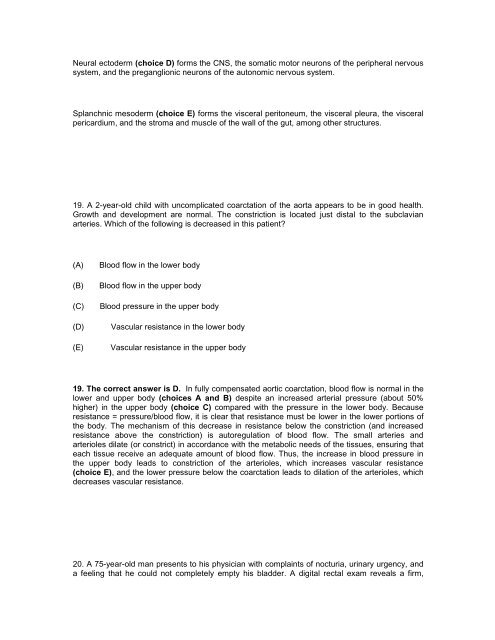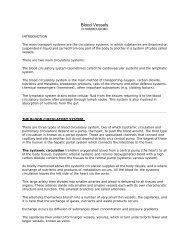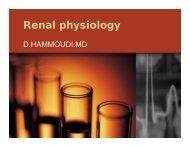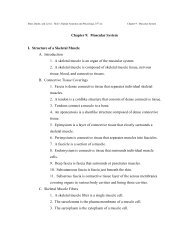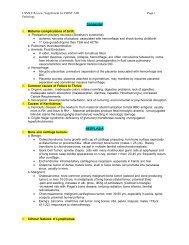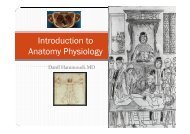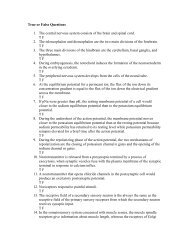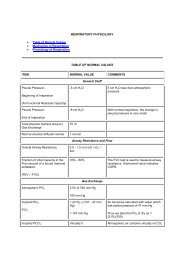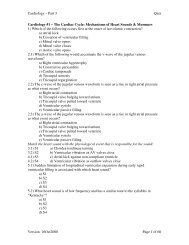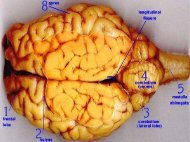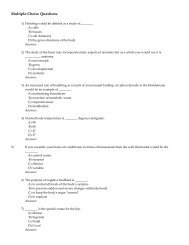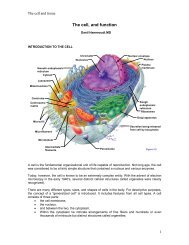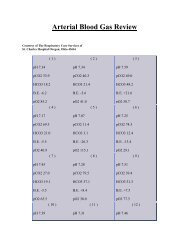L:\usmle review 7 - Sinoe medical homepage.
L:\usmle review 7 - Sinoe medical homepage.
L:\usmle review 7 - Sinoe medical homepage.
Create successful ePaper yourself
Turn your PDF publications into a flip-book with our unique Google optimized e-Paper software.
Neural ectoderm (choice D) forms the CNS, the somatic motor neurons of the peripheral nervous<br />
system, and the preganglionic neurons of the autonomic nervous system.<br />
Splanchnic mesoderm (choice E) forms the visceral peritoneum, the visceral pleura, the visceral<br />
pericardium, and the stroma and muscle of the wall of the gut, among other structures.<br />
19. A 2-year-old child with uncomplicated coarctation of the aorta appears to be in good health.<br />
Growth and development are normal. The constriction is located just distal to the subclavian<br />
arteries. Which of the following is decreased in this patient<br />
(A)<br />
(B)<br />
(C)<br />
(D)<br />
(E)<br />
Blood flow in the lower body<br />
Blood flow in the upper body<br />
Blood pressure in the upper body<br />
Vascular resistance in the lower body<br />
Vascular resistance in the upper body<br />
19. The correct answer is D. In fully compensated aortic coarctation, blood flow is normal in the<br />
lower and upper body (choices A and B) despite an increased arterial pressure (about 50%<br />
higher) in the upper body (choice C) compared with the pressure in the lower body. Because<br />
resistance = pressure/blood flow, it is clear that resistance must be lower in the lower portions of<br />
the body. The mechanism of this decrease in resistance below the constriction (and increased<br />
resistance above the constriction) is autoregulation of blood flow. The small arteries and<br />
arterioles dilate (or constrict) in accordance with the metabolic needs of the tissues, ensuring that<br />
each tissue receive an adequate amount of blood flow. Thus, the increase in blood pressure in<br />
the upper body leads to constriction of the arterioles, which increases vascular resistance<br />
(choice E), and the lower pressure below the coarctation leads to dilation of the arterioles, which<br />
decreases vascular resistance.<br />
20. A 75-year-old man presents to his physician with complaints of nocturia, urinary urgency, and<br />
a feeling that he could not completely empty his bladder. A digital rectal exam reveals a firm,


